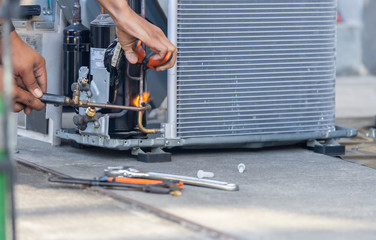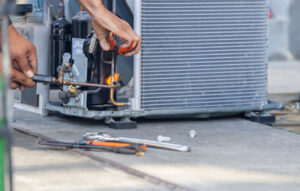From storms to physical damage, fences can be prone to repair needs. It is important to tackle any problems that arise as soon as possible, so your wooden fence will last longer.
One common problem is that fence panels blow over in high winds. This is a simple issue that can be solved by nailing or screwing the panel to the railings.
Whether your fence is made from wood or metal, it relies on a series of posts that give it stability. If one of your fence posts rots or simply becomes too unstable to continue supporting the fence, replacing it is the only option. Replacing a fence post is more than just digging out the old post and replacing it with a new one; you’ll need to brace the new post until it’s vertical and then fill in the soil void around the footer. Depending on the state you live in, you may need to call a local utility company to locate buried power lines and other hazards before beginning your project.
First, remove any screws or nails connecting the damaged fence post to the detachable panel using a cordless drill or hammer. Once these are removed, go to the fence panel side and loosen any screws attaching the horizontal rails to the metal brackets that hold the fence panels. After removing the metal brackets, lift the fence panels upward with an assistant and set them aside.
To dig out the rotten fence post, dig up the concrete footer at least 18 inches around the damaged post and down about two feet. This will expose the underlying wood, which you should then dig out and replace with a suitable replacement like pine or redwood. The best wood to use for fence posts is pressure-treated, which extends the life of the posts by reducing damage from weather and insects.
For more serious damage, a fence patch kit can help repair cracks and small breaks in the post. These kits contain impact- and UV-resistant products that work well for fixing fence posts without the need to completely replace them.
Rails
Over time, weather and general use can take a toll on fence rails. Often, the problem occurs when the ends of a rail begin to rot or fasteners lose their grip. The problem can also occur when a fence has been built on a hill and the rails are unable to adequately support the sloping screen. Fortunately, rails that have loosened or separated from the post can usually be restored by tightening them and reinforcing them with metal post-rail connectors. Before you do this, though, brush the end of each rail with wood preservative to arrest any incipient rot.
The horizontal rails that support the fence screen may be either pickets or solid boards. They can also be part of a decorative pattern that includes other elements, such as diagonal or zigzag patterns. If the rails are loose, the screen will shift or sag, and the resulting gap can create privacy problems or allow people to see into your yard. This is often an easy fix.
For wood fences, use a metal brace kit to lift the corners of the gate. This prevents the gate from dragging and helps the gate last longer. For chain link fences, a come-along tool can be used to pull the chain links back into place.
Fence gates are another common point of deterioration. If the gate is hard to open or close, the track may be sagging or the hinges may have become damaged. This is often caused by dragging or windy conditions. A metal brace can be used to lift the corners of the gate, reducing the tension on the hinges and preventing the gate from dragging.
Wooden fences that are beginning to sag can sometimes be saved by nailing 2×4 bottom rails to the tops of the fence posts. The rails should be positioned flat between the posts, from slightly above grade level to about 12 inches up. Nail the rails to the posts with 10-d galvanized nails driven through the post and into the end of the rail on each side. Begin at one end of the fence and work your way around, making sure to keep the top rail flush with the bottom.
Post-Rail Connectors
Post-rail connectors help fences stay rigid and prevent sagging. They also prevent the ends of the rail from loosening and tearing away from the posts. When you discover a broken portion of a post-and-rail fence, you can repair it quickly and easily with metal connectors that attach to the base of the posts.
Before attempting any repairs, use pliers to disconnect and remove wire ties from the fence fabric at both the top and bottom of the affected section of the rail. If the wire ties are in good condition, set them aside for reuse. Once the ties are removed, dig around the base of the post with a shovel until it releases from the concrete. If the post has been damaged beyond repair, replace it with a new one.
The horizontal rails that support the fence screen, which can be pickets, solid boards, or other decorative pattern elements, often sag over time. This sagging is often caused by the weathering of the rail ends and the loosening of fasteners that hold them in place. To reposition these rails, use a metal post-rail connector that tightens and reinforces them to prevent sagging. These connectors are available from Priefert in several styles and lengths.
For example, a Ponderosa Post & Rail Connector can be used with wood and composite posts to eliminate the need for nailing or screwing rails in place. It provides a 1″ standoff base that reduces the chance of water splashing and corrosion at the concrete attachment point.
Another option is a simple sleeve made of galvanized steel that fits around wooden, metal, and vinyl posts. It’s easy to install and doesn’t require any tools or welding. It’s even more durable than staining and painting, which can chip or rust over time. The sleeve helps keep the post from rotting, and it’s a cost-effective alternative to replacing the entire post. This type of solution is also useful for repairing damaged portions of existing fences. It may take some trial and error to find the right sleeve for your post, so be sure to consult a professional.
Wrought Iron
Wrought iron is a sturdy, dependable material for fences and railings. However, like any metal, it can become damaged over time, and breaks can occur due to stress or weather. Fortunately, most broken iron can be mended easily with epoxy putty or superglue. It is important to follow safety rules when working with iron. Wearing glasses or goggles to protect against shards of metal and a face mask to filter out iron dust can help keep you safe. Work gloves are also recommended.
To begin, you will need to document the condition of the wrought iron and any other parts of the fence. Make sure that you take before and after pictures of any repairs and give a detailed description of the problem. This will ensure that any restoration efforts are accurate and will match the original look of the fence when complete.
Rust is an inevitable part of owning a wrought iron fence, but it is possible to limit its damage by nipping it in the bud before it takes hold. Depending on the severity of the rust, you may be able to remove it by using a wire brush, sandpaper, or chemical rust neutralizers. There are also rust-inhibiting primers that you can use to prevent corrosion from forming.
Once the rust is removed, you can fill in any holes with putty and repaint the area. It is important to select a paint that is specifically for iron and will stand up well outdoors. Then apply two coats of the primer to seal the wrought iron from moisture and corrosion. After this, you can paint the wrought iron a color that matches the rest of the fence.
Some rust can be too extensive to repair with sandpaper or chemical products, and it is sometimes necessary to replace sections of the wrought iron. If this is the case, professional fence services should be called in to do the job. It is important to replace any damaged pieces as soon as possible to prevent rust from spreading further and weakening the entire fence.

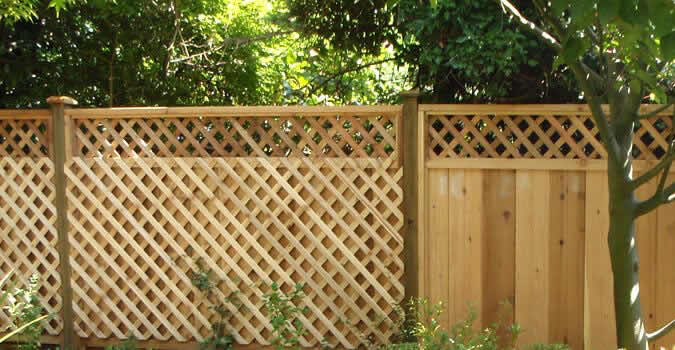

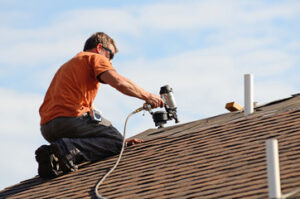
 Chimney Sweep uses various tools to remove soot and creosote from flues and smoke chambers. This process is messy, but the chimney sweep will take precautions to protect the carpet and furniture from ash and debris. They will put down a drop cloth and utilize a shop vac to decrease dust in your home. They may also wear masks and goggles to protect themselves. They will begin either from the inside of the fireplace or the outside of the house, depending on the conditions.
Chimney Sweep uses various tools to remove soot and creosote from flues and smoke chambers. This process is messy, but the chimney sweep will take precautions to protect the carpet and furniture from ash and debris. They will put down a drop cloth and utilize a shop vac to decrease dust in your home. They may also wear masks and goggles to protect themselves. They will begin either from the inside of the fireplace or the outside of the house, depending on the conditions.

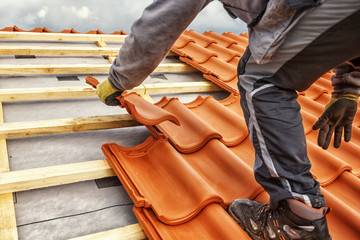
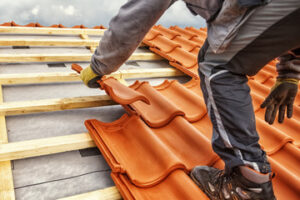 The roof is one of the most important parts of your home or building. It protects the residents and their belongings from the elements, including wind, rain, snow and extreme temperatures. An updated, sturdy roof makes a home more attractive to potential buyers and can increase its value. It can also help save on energy costs. In addition, a new roof can come with a manufacturer warranty lasting two to 25 years.
The roof is one of the most important parts of your home or building. It protects the residents and their belongings from the elements, including wind, rain, snow and extreme temperatures. An updated, sturdy roof makes a home more attractive to potential buyers and can increase its value. It can also help save on energy costs. In addition, a new roof can come with a manufacturer warranty lasting two to 25 years.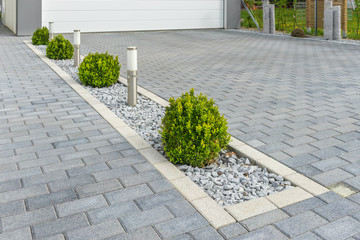
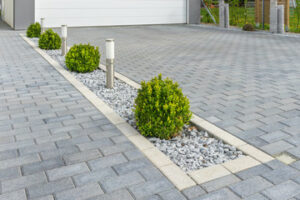

 A kitchen remodel isn’t complete without a well-designed layout. Whether you have a small L-shaped kitchen or an expansive U-shaped layout, a harmonious arrangement of cabinets, countertops, and appliances will make your cooking area as functional as it is beautiful. While there are many different layouts, the best plan for your home will usually fall into one of six classic kitchen design plans:
A kitchen remodel isn’t complete without a well-designed layout. Whether you have a small L-shaped kitchen or an expansive U-shaped layout, a harmonious arrangement of cabinets, countertops, and appliances will make your cooking area as functional as it is beautiful. While there are many different layouts, the best plan for your home will usually fall into one of six classic kitchen design plans:
 Landscaping refers to designing and modifying outdoor spaces, such as gardens, parks, and yards, to enhance aesthetic appeal and functionality. It uses various elements, such as plants, trees, rocks, water features, and outdoor structures, to create a visually pleasing and functional environment. Landscaping can range from simple plantings and lawn maintenance to complex projects that involve the construction of outdoor living spaces, such as patios, decks, and kitchens. The goal of landscaping is to create a harmonious and attractive outdoor space that meets the homeowner’s or property owner’s needs while also enhancing the overall beauty and value of the property.
Landscaping refers to designing and modifying outdoor spaces, such as gardens, parks, and yards, to enhance aesthetic appeal and functionality. It uses various elements, such as plants, trees, rocks, water features, and outdoor structures, to create a visually pleasing and functional environment. Landscaping can range from simple plantings and lawn maintenance to complex projects that involve the construction of outdoor living spaces, such as patios, decks, and kitchens. The goal of landscaping is to create a harmonious and attractive outdoor space that meets the homeowner’s or property owner’s needs while also enhancing the overall beauty and value of the property.

